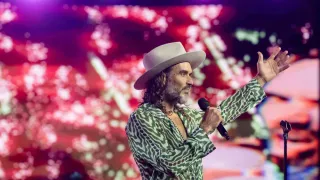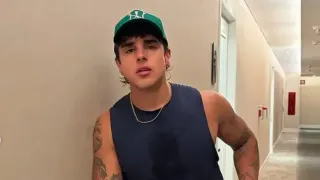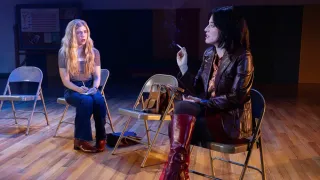July 19, 2020
Virus Deaths Top 600,000 and Hong Kong Warns of Resurgence
Cara Anna and Geir Moulson READ TIME: 3 MIN.
The number of people around the world who have died as a result of the coronavirus has passed the 600,000 mark as countries from the U.S. to South Africa to India struggle to contain infections. Hong Kong also warned of a resurgence in the virus as it issued tougher new rules on the wearing of face masks.
Concerns are rising that the pandemic has found fresh legs over the past few weeks, with Johns Hopkins University and the World Health Organization both recording daily highs in newly reported infections.
Pope Francis said that "the pandemic is showing no sign of stopping" and pointed to those whose suffering from the outbreak is worsened by conflicts.
While the U.S. leads global infections, South Africa now ranks as the fifth worst-hit country in the pandemic with more than 350,000 cases, or around half of all those confirmed on the continent. Its struggles are a sign of potential trouble to come for nations with even fewer health care resources.
India, which has now confirmed more than a million infections, on Sunday reported a 24-hour record surge of 38,902 new cases.
In Europe, where infections are far from their peak in the spring but local outbreaks are causing concern, leaders of the 27-nation European Union haggled for a third day in Brussels over a proposed 1.85 trillion-euro ($2.1 trillion) EU budget and coronavirus recovery fund.
German Chancellor Angela Merkel said there is "a lot of good will, but there are also a lot of positions" in the talks, which have have laid bare the fissures in the bloc about how the countries hit hardest by the pandemic, such as Italy and Spain, should be helped and under what conditions. She said the talks, which were initially scheduled to end on Saturday, could still end without a deal.
Confirmed global deaths from or with COVID-19 rose to more than 602,000, according to data compiled by Johns Hopkins. The United States tops the list with over 140,000, followed by more than 78,000 in Brazil, 45,000 in the United Kingdom and 38,000 in Mexico.
The number of confirmed infections worldwide has passed 14.2 million, with 3.7 million accounted for by the United States alone. Brazil has witnessed more than 2 million while India has recorded over 1 million. Experts believe the true numbers around the world are higher because of testing shortages and data collection issues in some nations.
Infections have been soaring in U.S. states such as Florida, Texas, Arizona, with many blaming a haphazard approach to the lifting of the lockdowns as well as the resistance of some Americans to wearing masks.
Even where the situation has been largely brought under control, new outbreaks continue to worry authorities and prompt the return of some restrictions.
Following a recent surge in cases, Hong Kong made the wearing of masks mandatory in all public places and told non-essential civil servants to work from home. Hong Kong leader Carrie Lam said the situation in the Asian financial hub is "really critical" and that she sees "no sign" that it's under control.
Police in Barcelona are limiting access to some of the city's beaches because sunbathers are ignoring regulations amid a resurgence of the coronavirus. Authorities in Amsterdam are urging people not to visit the city's famous red light district and have closed off some of the historic district's narrow streets because they are too busy.
Slaughterhouses also have featured in several outbreaks. Authorities in northwestern Germany's Vechta county said Saturday that 66 workers at a chicken slaughterhouse tested positive. That is much smaller than a recent outbreak in western Germany that prompted local authorities to order a partial lockdown.
Cases in the Australian state of Victoria rose again on Sunday, prompting a move to make masks mandatory in metropolitan Melbourne and the nearby district of Mitchell for people who leave their homes for exercise or to purchase essential goods.
Victoria Premier Daniel Andrews said those who fail to wear a mask will be fined 200 Australian dollars ($140).
"There's no vaccine to this wildly infectious virus and it's a simple thing, but it's about changing habits, it's about becoming a simple part of your routine," Andrews said.
Speaking on Sunday from his studio window overlooking St. Peter's Square, Pope Francis renewed his appeal for an immediate worldwide cease-fire that he said "will permit the peace and security indispensable to supplying the necessary humanitarian assistance."
___
Moulson contributed from Berlin. Associated Press writers around the world contributed to this report.
___
Follow AP pandemic coverage at http://apnews.com/VirusOutbreak and https://apnews.com/UnderstandingtheOutbreak






